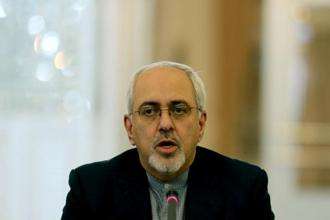December 23, 2014
While the Narendra Modi government’s push to incentivize manufacturing in the country — with its Make in India initiative — is yet to roll out in any meaningful manner and show its benefit, one industry is already reaping its dividend: the mutual fund business.
According to an article in the Economic Times, three asset management companies have launched or are in the process of launching schemes that are expected to benefit from the proposed initiative.
December 23, 2014
While the Narendra Modi government’s push to incentivize manufacturing in the country — with its Make in India initiative — is yet to roll out in any meaningful manner and show its benefit, one industry is already reaping its dividend: the mutual fund business.
According to an article in the Economic Times, three asset management companies have launched or are in the process of launching schemes that are expected to benefit from the proposed initiative.
In short, these schemes will own shares in firms that are expected to gain when the results of Modi’s effort start kicking in – say over the course of the next two-three years. These should likely be in the capital goods, engineering and auto space, among others.
But while ‘Make in India’ may be a good way to provide a fillip to the Indian economy, here’s why ‘Make in India’ funds may not be such a good idea to boost your portfolio’s returns.
One, thematic funds are inherently highly-risky. By virtue of their nature, they invest in select sectors and their fortunes become intertwined with those.
Furthermore, sectors associated with a theme such as ‘Make in India’ are highly cyclical themselves, and it is difficult to tell whether or how soon any benefits to push manufacturing will start to accrue benefits in the form of earnings.
While it is conceivable that increasing enthusiasm over manufacturing stocks — if a long-term bull market gets under way — could result in outsized gains for them, if the theme fails to take off or the market cycle turns, it could result in a damp squib.
Case in point being the slew of infrastructure/real estate focused schemes launched prior to 2008 when such stocks had caught investors’ fancy. After all these years, compared to diversified equity funds, the performance of infra-focused schemes has been nothing worth writing home about.
As Niranjan Risbood, director of research at Morningstar India told ET, thematic funds can at best find a tactical place in (or be a small part of) an investor’s portfolio – what financial advisors term satellite holdings, which may or may not boost overall returns of core holdings (diversified funds) but whose non-performance will not affect the portfolio in a big way.
The second problem with thematic funds is that they suffer from the curse of the market cycle. By design, such schemes are launched — primarily because they find takers only then – either in the midst of a bull market (when sizeable gains have already been made) or near the top (such as was the case with the launch of infra funds in late 2007-early 2008).
So while such funds make money for asset management companies by way of having more funds to manage, they may not necessarily lead to higher returns for investors over the long run.
Another argument that goes against such funds is that: in the absence of a past track record, it is difficult to judge how well its fund manager can execute the strategy she has planned.
For, having a sound strategy is one thing and executing it well is another. As the wide difference in performances of schemes pursuing a similar strategy (value investing, for instance) will tell you.
Finally, for such niche strategies, fund companies sometimes deploy some of their junior managers instead of their key ones – or even if they do, the senior managers often have too much on their plate (managing the funds’ flagship schemes) to really do justice to such schemes.
Fund researchers believe a single fund manager should at the most manage six schemes so as to be able to adequately focus on all. During bull markets when fund houses are busy rolling one fund after another off the assembly line in order to garner the highest assets, workloads on managers can increase to unmanageable levels. As we saw prior to 2008, when many fund managers were managing as many as 10-15 schemes.
Courtesy: MoneyControl















































































































